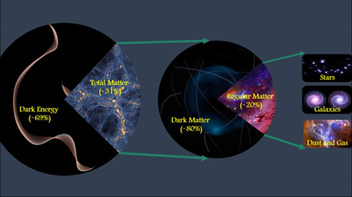

Context
The European Space Agency launched its Euclid spacecraft on a SpaceX Falcon 9 rocket to chart the history of the universe as far back as 10 billion years ago.
What is Euclid Mission?
- The European Space Agency's Euclid mission is designed to study the so-called "dark universe."
- 3D map of the Universe: Euclid will observe billions of galaxies out to 10 billion light-years to create the largest, most accurate 3D map of the Universe, with the third dimension representing time itself.
- This detailed chart of the shape, position and movement of galaxies will reveal
- Matter distribution: how matter is distributed across immense distances
- Evolution: how the expansion of the Universe has evolved over cosmic history, enabling astronomers to infer the properties of dark energy and dark matter
- This will help theorists to improve understanding of the role of gravity and pin down the nature of these enigmatic entities.
- Developed by: Euclid was designed and built entirely by ESA, with the US space agency, NASA, supplying photodetectors for its near-infrared instrument.
- Euclid is a medium-class mission in ESA’s Cosmic Vision Programme.
Spacecraft and instruments:
- The Euclid spacecraft is approximately 4.7 m tall and 3.7 m in diameter. It consists of two major components: the service module and the payload module.
- Payload module: The payload module comprises a 1.2-m-diameter telescope and two scientific instruments:
|
The name game
|
- Visible-wavelength camera (1.2-m reflecting telescope that feeds the two innovative scientific instruments): It takes very sharp images of galaxies over a large fraction of the sky and can view the universe in visible and near-infrared light
- Near Infrared Spectrometer and Photometer (NISP) instrument: It can analyse galaxies’ infrared light by wavelength to accurately establish their distance.
- Service module: The service module contains the satellite systems: electric power generation and distribution, attitude control, data processing electronics, propulsion, telecommand and telemetry, and thermal control.
What is Dark Matter?
- Dark matter is the predominant form of matter in the universe.
- Without it, the stars probably would not have formed in the early universe, and the presence of dark matter across the universe is essential to all cosmic structure formation.
- Dark matter is not visible and does not absorb radiation.
- It deflects light because of its gravitational pull and deforms the shape of the galaxies as seen by the observer.
- This effect is called gravitational weak lensing.

- This effect is called gravitational weak lensing.


